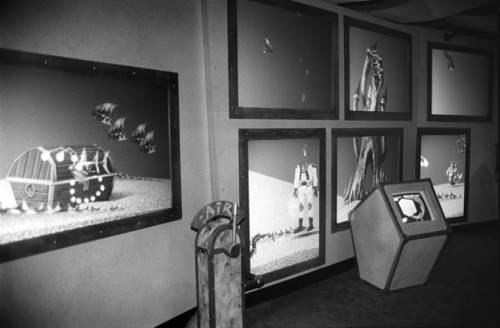
FAQ About The Role of Virtual Reality in Museum Experiences

What is virtual reality (VR) technology in the context of museums?
Virtual reality (VR) technology in museums refers to using computer-generated simulations to create immersive, three-dimensional environments that museum visitors can interact with. This technology provides a unique way to engage with exhibits, allowing visitors to experience historical events, explore distant locations, or view art in new, interactive formats.

How does VR enhance the museum experience for visitors?
VR enhances the museum experience by providing an immersive and interactive way to explore exhibits. It can recreate historical settings, offer 360-degree views of artworks, and allow for storytelling that brings objects to life. This engaging experience can make learning more effective and enjoyable for visitors of all ages.

Can VR increase accessibility in museums?
Yes, VR can significantly increase accessibility in museums. It can provide remote access to museum exhibits for those unable to visit in person, such as individuals with physical disabilities or those living far away. VR experiences can also include features like subtitles, sign language, or audio descriptions to aid understanding for visitors with sensory impairments.

What types of museum exhibits benefit most from VR technology?
Museum exhibits that benefit most from VR technology often include historical recreations, scientific simulations, or complex art pieces. For example, VR can bring to life detailed re-enactments of historical events, showcase the inner workings of ecosystems, or provide an immersive view of ancient architectural sites.

Are museums using VR to engage younger audiences?
Yes, many museums are using VR to engage younger audiences who are often more familiar with technology. VR offers an interactive and exciting way to learn, making museums more appealing to children and teenagers. By integrating VR, museums can create dynamic educational experiences that captivate a younger demographic.

How do visitors typically interact with VR experiences in museums?
Visitors typically interact with VR experiences in museums using VR headsets and hand controllers, which allow them to navigate and manipulate virtual environments. Some experiences may also include room-scale VR setups, where visitors can walk around and explore a larger virtual space. Touchscreens and VR kiosks are other methods for interaction without headsets.

What are the challenges museums face when implementing VR technology?
Museums face several challenges when implementing VR technology, including high costs, technical requirements, and the need for staff training. Ensuring that VR experiences are accessible to all visitors is another challenge. Additionally, museums need to consider the balance between traditional exhibits and digital experiences to avoid alienating visitors who prefer conventional formats.

How does VR technology in museums differ from conventional exhibitions?
VR technology differs from conventional exhibitions by offering an interactive and immersive experience that allows visitors to engage with exhibits more deeply. While traditional exhibitions might rely on static displays and artifacts, VR can bring stories to life through simulations, animations, and interactive narratives.

Can VR be integrated into existing museum exhibits?
Yes, VR can be integrated into existing museum exhibits by complementing traditional displays with immersive content. For instance, a museum could use VR to provide a virtual tour of an archaeological site linked to a physical artifact on display. This integration enriches the experience by adding context and depth that physical exhibits alone might not provide.

What equipment is needed for a VR experience in museums?
A typical VR experience in museums requires VR headsets and possibly hand controllers. Some experiences may also use platforms for room-scale VR. Hardware like high-performance computers or gaming consoles may be necessary to handle the VR software. Additionally, museums might need display screens and sound systems to enhance the VR setups.

How do museums ensure the content of VR exhibits is educational?
Museums ensure the educational content of VR exhibits by collaborating with historians, scientists, and educators to create accurate and informative experiences. Content is often reviewed and tested to ensure it aligns with educational standards and museum goals, providing visitors with reliable information while immersing them in the experience.

Does VR in museums affect visitor attendance?
Integrating VR in museums can positively impact visitor attendance by attracting new audiences interested in innovative experiences. VR can serve as a unique draw for those seeking educational and entertaining content, potentially increasing overall foot traffic. However, the effect on attendance may vary depending on the quality and appeal of the VR experiences offered.

What are some examples of museums using VR technology effectively?
Examples of museums effectively using VR technology include the Smithsonian's National Museum of Natural History, which offers VR tours of its exhibits, and the British Museum's collaboration with Google to provide virtual tours of its galleries. These institutions showcase how VR can bring educational content to a global audience innovatively.

Are there ethical considerations when using VR in museums?
There are ethical considerations, such as ensuring that VR representations respect the cultures and histories they portray, especially when dealing with sensitive subjects. Museums must also consider privacy issues, as VR equipment may collect data on user interactions. It is vital for museums to maintain transparency and ethical standards when implementing VR.

How can VR technology help museums during a pandemic?
During a pandemic, VR technology can help museums by providing remote access to their collections and exhibits, allowing people to experience and learn from the museum's offerings without physical presence. Virtual tours and experiences can keep audiences engaged, maintaining interest and support for the museum even when in-person visits are not possible.

What role does VR play in preserving cultural heritage?
VR plays a significant role in preserving cultural heritage by creating detailed digital records of artifacts, sites, and traditions. These virtual reconstructions help protect cultural information from loss due to natural disasters or conflict, enabling future generations to access and interact with historical and cultural knowledge digitally.

Can VR technology improve the accessibility of art to people with disabilities?
Yes, VR technology can improve the accessibility of art by offering features tailored for people with disabilities, such as audio descriptions for the visually impaired or customized interfaces for those with reduced mobility. VR offers flexible options to personalize the experience, ensuring broader inclusion and engagement for visitors with varying needs.

Is it expensive for museums to implement VR exhibitions?
Implementing VR exhibitions can be expensive due to the costs of advanced technology, software development, and staff training. However, costs vary depending on the scope and scale of the project. Some museums partner with technology companies or use grants to offset expenses, making it more feasible to integrate VR into their offerings.

What are the future prospects for VR in museum experiences?
The future prospects for VR in museum experiences are promising, with continuing advancements in technology likely leading to more sophisticated and accessible VR content. Museums may incorporate augmented reality and AI technologies alongside VR to create even more comprehensive interactive exhibitions, broadening their appeal and educational reach.

How do museums measure the success of VR experiences?
Museums measure the success of VR experiences through visitor feedback, engagement metrics, and educational outcomes. Surveys, usage analytics, and observational studies help assess how well the VR content meets visitor needs and museum educational goals. Success is often gauged by increased attendance, visitor satisfaction, and enhanced learning experiences.
